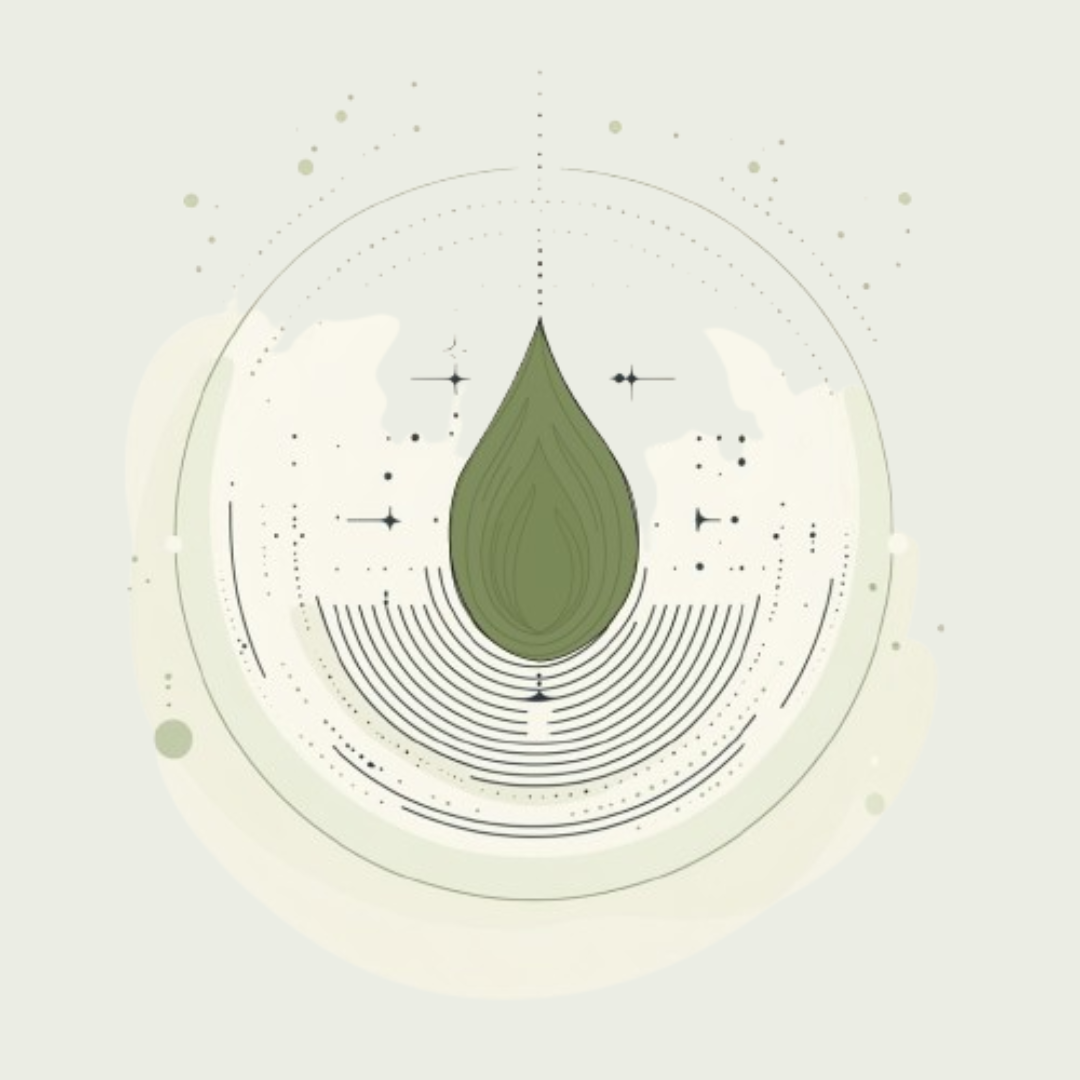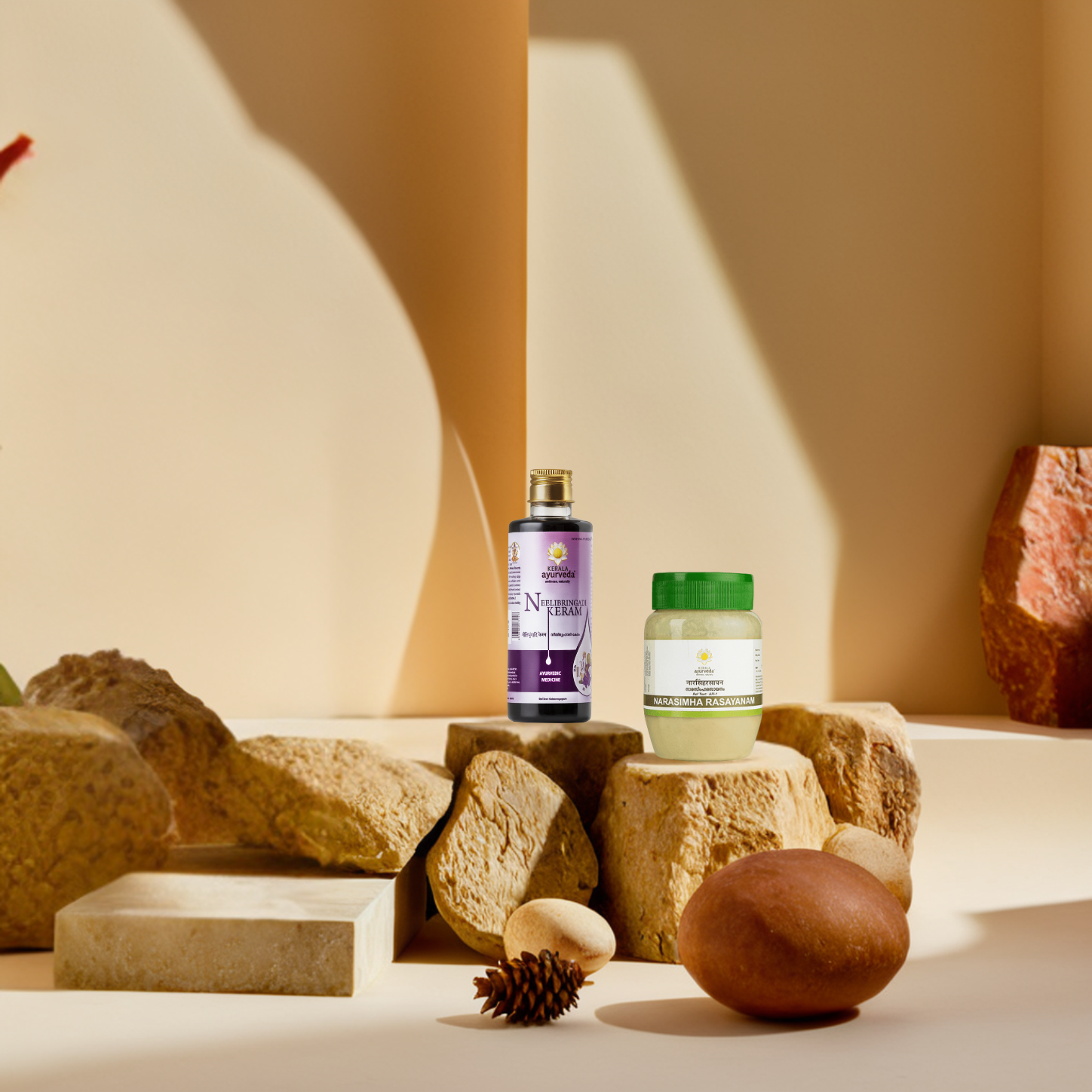We see the human body as a complex system of interconnected organs, bones, muscles, arteries, and veins. However, we often overlook how these systems are interconnected to sustain life. This is where Ayurveda sheds light on the different aspects that make up the human body and facilitate various internal functions.
According to Ayurveda, the human body is governed by three principal energies, also known as doshas: Pitta, Vata, and Kapha. Every individual has all three doshas, but one is usually more prominent than the others. This dominant dosha determines the Ayurvedic body type or constitution, also called Prakriti.
For example, a person with a predominant Vata dosha will have a Vata body type.
What does this mean? How do these body types differ, and why does it matter? In this blog post, we’ll discuss Ayurvedic body types, what they mean, how they influence your lifestyle, and your physical and mental characteristics.
The Five Elements and Their Role in Ayurveda
Ayurveda views the human body as a microcosm of the natural world. It is made up of five elements: earth, water, fire, air, and ether. These elements combine in different ways to form the three doshas, which are:
- Vata: Comprised of air and ether.
- Pitta: Comprised of fire and water.
- Kapha: Comprised of water and earth.
These elements are not just symbolic; they directly affect how the body functions. For example, Vata governs movement and flow in the body, such as circulation and breathing. Pitta controls the digestive process, heat, and metabolism, while Kapha governs stability, structure, and lubrication.
Kapha Body Type
Kapha represents the energies of water and earth, providing structure, stability, and connection within the body. It plays a crucial role in maintaining hydration, immunity, skin health, and joint lubrication. Kapha energy is primarily found in the lungs, throat, head, connective tissues, ligaments, fatty tissues, and tendons.
Physical Traits of Kapha Body Type
- Well-developed body, often on the heavier side
- Broad chest and thick skin
- Thick, dark, and wavy hair
- Slow metabolism and natural endurance
- Oily skin
Kapha individuals often have a calm and easy-going demeanor, with a tendency to gain weight more easily than others. They are resilient and often have a strong immune system.
Mental Traits of Kapha Body Type
- Calm and collected demeanor
- Strong emotional connections and attachment to people
- Peace-loving, forgiving, and slow to anger
- Resistant to change but steady in their actions
- Tendency to hold onto memories and emotions
Their mental attributes often make them nurturing, dependable friends or caregivers. However, they can be stubborn at times and may find it difficult to let go of things, be it emotions or material possessions.
Also read: Kapha Dosha: Everything You Need to Know
Pitta Body Type
Pitta is the fire element, combined with water, that governs transformation, digestion, and metabolism. Pitta’s primary role is to manage the body’s metabolic processes, including digestion, absorption, and heat regulation. It is responsible for the production of enzymes, hormones, and bile, all essential to break down and process food, and for converting food into energy.
Pitta is found primarily in the liver, pancreas, small intestines, blood, and eyes.
Physical Traits of Pitta Body Type
- Medium build with moderate muscle development
- Soft, fair skin that may be prone to breakouts
- Copper-colored or green eyes
- Prone to premature graying and thinning hair
- Strong digestion and metabolism
People with Pitta body types tend to have a well-defined physique and often maintain an optimal weight without much effort. Their skin is usually smooth and glowing, but can become irritated during hot weather or stress.
Mental Traits of Pitta Body Type
- Sharp intellect and quick decision-making skills
- Strong concentration and leadership qualities
- Competitive and goal-oriented
- Can become irritable or angry when things don’t go their way
- Thrive in challenging and high-energy environments.
Pitta individuals are natural leaders and often excel in environments that demand efficiency and results. However, their strong drive can sometimes lead to impatience and irritability, particularly in stressful situations.
Also read: Guide to Pitta Dosha | Symptoms, Home Remedies & Diet
Vata Body Type
Vata is the energy of movement and is primarily composed of the elements air and ether. It governs the movement of fluids, circulation, and activities such as breathing, heartbeat, and muscle contraction. Vata is responsible for coordinating the actions of the other two doshas, Pitta and Kapha.
Vata is found mainly in the colon, bones, skin, and nervous system.
Physical Traits of Vata Body Type
- Slender, underdeveloped frame
- Dry, often cracked skin.
- Thin, wavy hair and sparse eyelashes
- Cold hands and feet
- Prone to digestive issues, especially bloating or constipation
Vata individuals tend to have a thin, delicate build, with bones and veins that are easily visible. Their body tends to be cold, and they are more susceptible to dehydration and digestive issues due to their active, fast-moving nature.
Mental Traits of Vata Body Type
- Quick thinkers with a high level of creativity
- Easily excited and prone to mood swings
- Excellent at multitasking but struggles with focus and consistency
- Prone to anxiety, restlessness, and confusion during stressful times
Vata types are known for their creativity and innovation. They excel in dynamic environments where quick thinking is required. However, their rapid thought processes can lead to forgetfulness, and they may struggle with maintaining focus for extended periods.
Also read: Vata Dosha: Symptoms, Causes and How to Balance High Vata Levels.
How to Identify Your Ayurvedic Body Type and Balance Dosha?
Ever wondered why your skin reacts differently to certain products or why you feel more energized at certain times of the day? It all comes down to your Ayurvedic body type. Understanding your dosha is a great first step in figuring out how to live your healthiest, most balanced life. Let’s walk through each dosha and give you a better idea of which one sounds most like you.
Identifying Vata Dosha
If Vata is your dominant dosha, you might notice your skin tends to be dry, especially in cold weather. People with Vata types are often very active and talkative, but struggle with short-term memory. If you’ve been told that you sleep with your eyes half open, this could be another sign.
How to Balance Vata
If Vata’s causing some issues, it’s all about bringing more warmth, moisture, and stability into your life:
- Include warm herbs and spices in your meals, such as ginger, cardamom, and pepper.
- Eat small, regular meals to keep your digestion steady.
- Opt for warm, moist foods like soups, stews, and cooked grains.
- Include sweet fruits such as bananas, mangoes, and berries. Avoid sour or cold fruits.
- Stick to well-cooked meals—no raw or cold foods.
- Drink plenty of warm water, especially in the morning, and choose hot beverages over cold drinks.
- Consume Dhanwantharam Gulika (Tablets) or perform a self-massage using Dhanwantharam thailam. These herbal formulations contain ingredients like ginger and cardamom, which are suitable for the Vata body type.
Identifying Pitta Dosha
Pitta is the dosha of transformation and metabolism, and if it’s dominant in you, you probably have a medium build. If you’re the type to get irritable when you haven’t eaten or are feeling overheated, these could be signs of Pitta. Pitta people may experience digestive discomfort like acid reflux or heartburn.
How to Balance Pitta
If you’re a Pitta type, you’ll want to cool things down. Here’s how:
- Set a consistent eating schedule to keep your digestion balanced.
- Add ghee to your meals to nourish your joints and skin.
- Drink plenty of warm water, aiming for about 4 liters per day.
- Practice meditation or calming yoga to help manage irritability and stress.
- Limit spicy, oily, and fried foods, and try to cut back on alcohol and caffeine.
- Amrutharishta and Alsactil are great Ayurvedic remedies for Pitta types to help maintain a calm digestive system, and Amruthotharam Kwath and Amruthotharam Kwath Tablets can help cool down any internal heat.
Identifying Kapha Dosha
Kapha people tend to have a more solid, well-developed body and find it easier to gain weight. Losing weight may feel like a real struggle. However, Kapha types are usually calm, collected, and grounded, even under pressure. They’re nurturing and have a strong emotional connection to others.
How to Balance Kapha
Kapha types need to bring in lightness, warmth, and stimulation. To balance Kapha:
- Eat smaller portions to avoid feeling sluggish or overly full.
- Steer clear of cold, heavy foods like dairy and fried items. Instead, include spicy foods like chilli and ginger to kick-start your metabolism.
- Focus on light meals and fruits like apples, berries, and peaches.
- Drink herbal teas with cinnamon, ginger, or pepper to help with digestion and metabolism.
- If you're feeling congested, try Anu Thailam or Karpooradi Thailam to help clear sinus or chest congestion.
By identifying your Ayurvedic body type, you can create a lifestyle that aligns with your unique needs. Balancing your dosha with simple adjustments can lead to improved health, energy, and well-being.
Conclusion
By understanding your Ayurvedic body type, you gain valuable insights into your unique health needs. Balancing your dosha with mindful choices in diet, lifestyle, and natural remedies helps maintain harmony within, leading to improved overall health, vitality, and mental clarity. Apply Ayurveda to live your life with purpose, energy, and well-being, aligned with your true self.
FAQs
1. Is anxiety a vata imbalance?
Yes, anxiety is considered a Vata imbalance in Ayurveda. It primarily involves the subdoshas Prana and Vyana. Anxiety occurs when Vata invades the mind and nervous system (manas), leading to restlessness and nervousness. Prana Vata governs the movement of the life-force (prana) into the body, which is affected by Vata imbalances, often resulting in anxiety and stress.
2. What is the best diet for a kapha body type?
The best diet for Kapha body type includes foods that are bitter, astringent, and pungent. Focus on foods like beans, green gram, Bengal gram, horse gram, Amla, garlic, neem, radish, bitter gourd, mustard oil, and ginger. Barley, despite its sweetness, is an ideal choice as it’s astringent and cooling, helping balance Kapha. Foods like honey, long pepper, and Triphala also aid in balancing Kapha.
3. What are the characteristics of each dosha?
Each dosha has distinct characteristics. Vata, associated with air and ether, often has a light build, dry skin, and quick movements. Pitta, linked to fire and water, is marked by a medium build, strong digestion, and sharp intellect. Kapha, connected to earth and water, features a sturdy build, calm demeanor, and steady energy levels.
4. How can I balance my dosha through diet and lifestyle?
Balancing your dosha involves incorporating specific foods and practices. For Vata, consume warm, moist foods like soups and stews; engage in grounding activities such as yoga and meditation. For Pitta, opt for cooling foods like cucumbers and melons; practice stress-reducing exercises and maintain a regular routine. For Kapha, include light, spicy foods; stay active with regular exercise and avoid excessive sleep.





